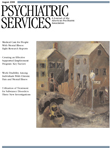Narrative therapy offers effective psychotherapeutic approaches for every kind of mental health problem, and in his rigorous and graceful new book, Maps of Narrative Practice, Michael White has created a definitive text of theory and practice. White first began exploring narrative practices in the 1970s when working with families and children with long-standing problems, such as encopresis, by attending to how they experienced their lives through stories. By noticing their earliest, most tentative steps toward well-being and offering questions that made it possible to incorporate these "sparkling moments" into meaningful new stories of self-development, he discovered powerful ways to help people free themselves from their problems and find the health and happiness they desired.
Over the next three decades, while working with people dealing with problems such as agoraphobia, bereavement, depression, psychosis, attention-deficit hyperactivity disorder, and trauma, he further developed and fleshed out how and why these emotionally moving, often playful "re-authoring conversations" work so well. Unrelated to "narrative medicine" or therapies that use stories in a general way, narrative therapy as developed by Michael White and his associates brings particular breadth, rigor, subtlety, and clinical acumen to working with the stories of people's lives, attending meticulously to which stories are focused upon and what effect those stories have. His prolific body of work stands as a foundation of narrative therapy, summarized and systematically presented for the first time in this brilliant new book.
White maps out key territories of narrative practice, deftly linking theory with sentence-by-sentence analysis of therapeutic conversations. The book begins with the core narrative concept "externalizing the problem." White says, "When the problem becomes an entity that is separate from the person, and when people are not tied to… negative 'certainties' about their lives, new options for taking action to address the predicaments of their lives become available." Relinquishing a shameful "spoiled" identity, for example, an identity of a "crazy" person, to claim an identity as a person who is resisting and trying to overcome a challenging problem, such as "habits" or "voices," energizes and inspires clients and the clinicians working with them. Continuing in this "re-authoring" vein, the smallest successes in limiting a problem are elicited, named, fleshed out, and historicized, making available a new story of the person's knowledge and skills in coping that can be drawn from and built upon. Furthermore, discovering why a person wishes to overcome the problem (such as, "because I want to contribute something to the world") opens up new possibilities for positive developments.
Narrative therapy brings the "why?" back to psychotherapy as a means to honor the importance of intentions and values in the creation of our lives, rather than examining only states, traits, drives, or biochemistry. Although White acknowledges the ways in which naturalistic explanations for people's behaviors may be beautiful (such as "it's only human to long for acknowledgement"), he sees these conclusions as therapeutic "cul-de-sacs." Rather, narrative therapy seeks to "spark a heightened state of mental activity" in which people are "stretching their minds" and "exercising their imaginations" in creating new possibilities for their lives, on the basis of what they personally give meaning to. These practices lead to movement from a problem-saturated identity to a value-based identity that supports actions that move a person closer to living as he or she prefers. Unprecedented change and growth can result. The metaphor of maps, used throughout the book, aptly captures White's detailed but nonprescriptive approach, in which he offers guidance for fruitful therapeutic inquiry while encouraging practitioners to allow conversations to be "unruly" and nonlinear.
Maps of Narrative Practice is an important text by a master. Beautifully organized and a pleasure to read, it brings theory alive with colorful transcripts of therapy in every chapter and offers examples and instructions for applying narrative practices with the full range of mental health challenges that psychiatrists and therapists may be called upon to address. Although it is an excellent, accessible introduction to the field, experienced narrative therapists will draw upon its thoroughness, precision, and subtlety to invigorate and hone their craft.

